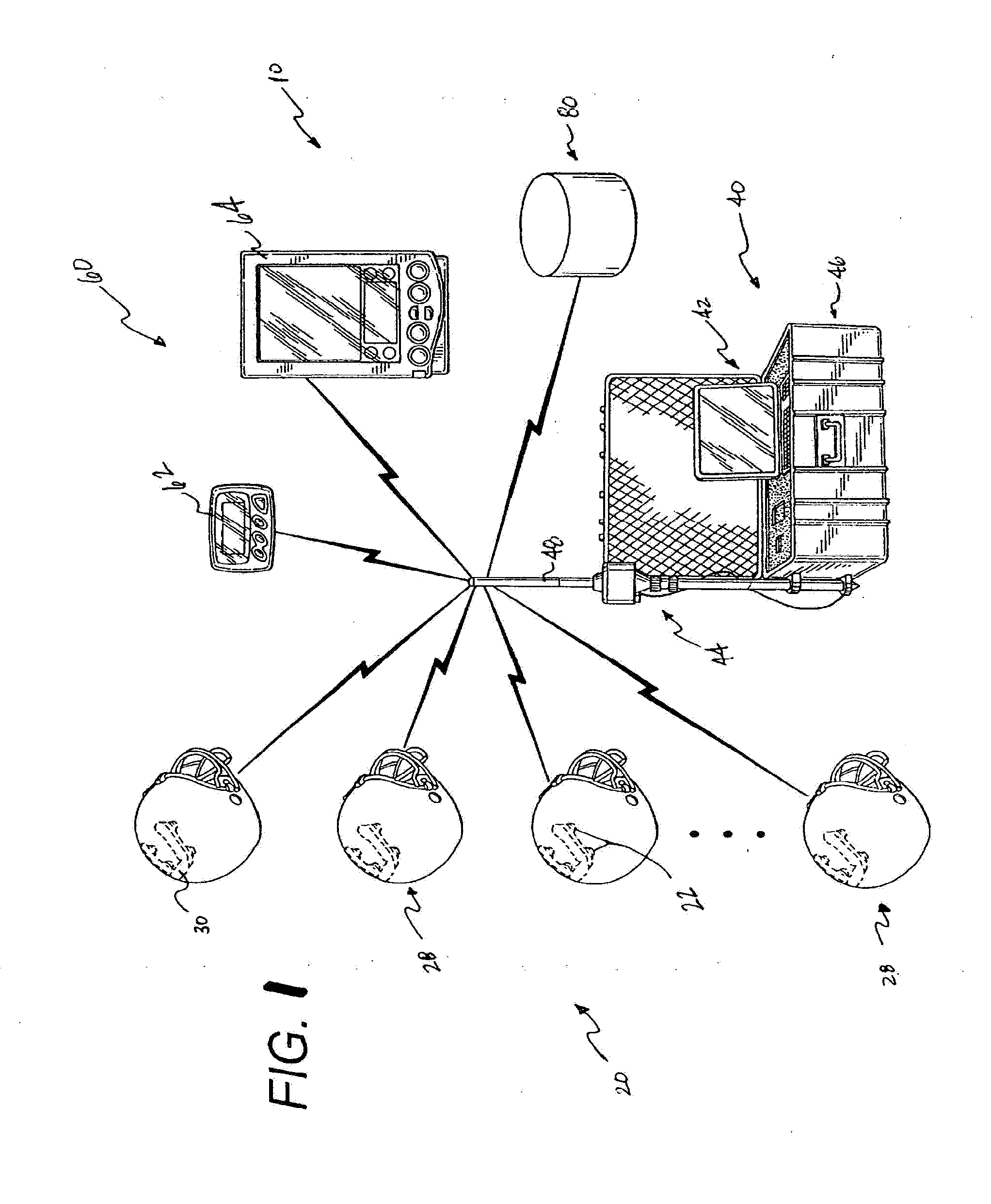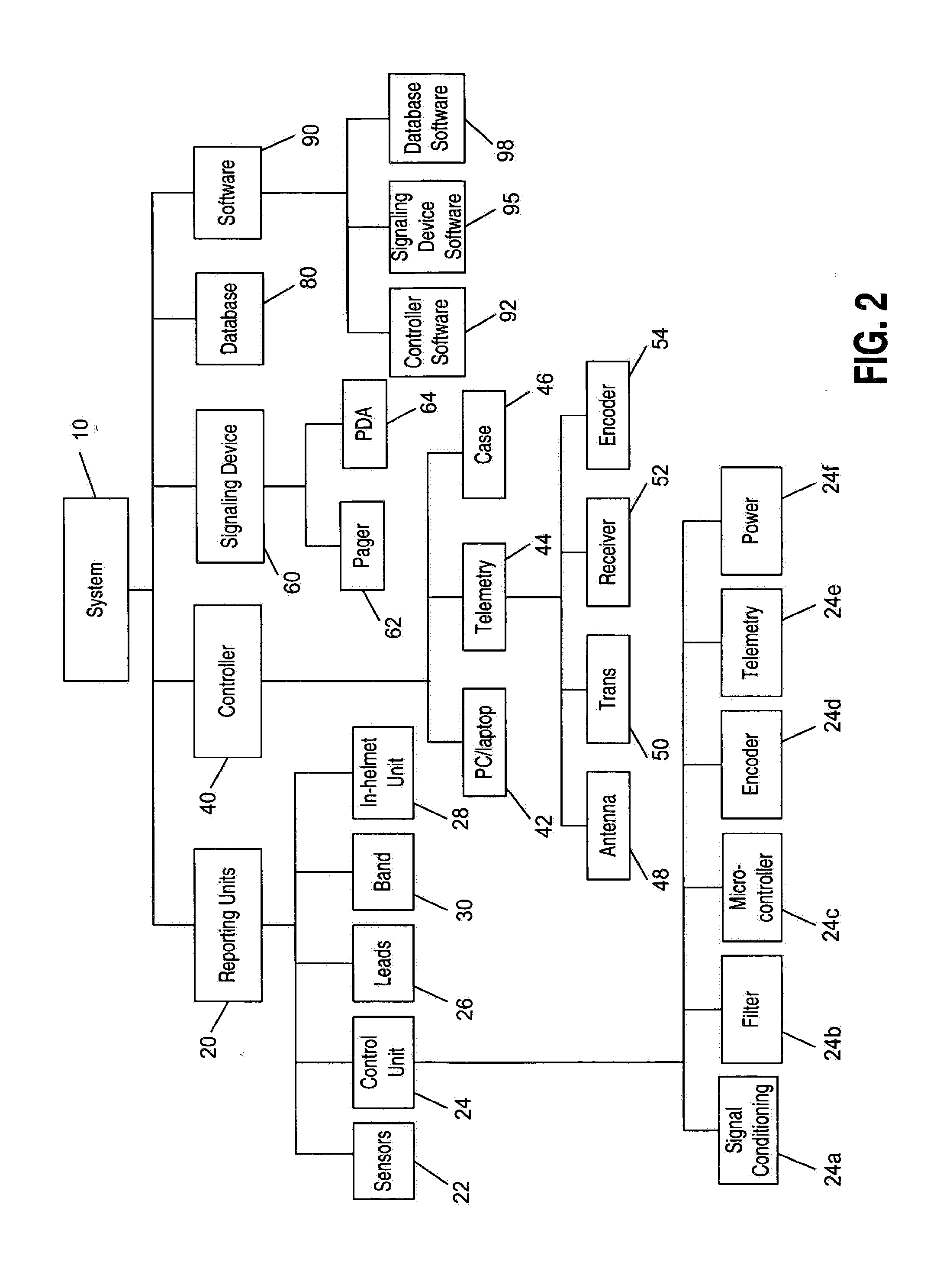System and method for evaluating and providing treatment to sports participants
a technology for providing treatment and sports participants, applied in medical science, diagnostics, inertial sensors, etc., can solve the problems of severe and catastrophic brain injury, limited value of prior studies, and impact on the skull and brain of individuals as well as movement of the head or body parts
- Summary
- Abstract
- Description
- Claims
- Application Information
AI Technical Summary
Benefits of technology
Problems solved by technology
Method used
Image
Examples
Embodiment Construction
[0032]While this invention is susceptible of embodiments in many different forms, there are shown in the drawings and will herein be described in detail preferred embodiments of the invention with the understanding that the present disclosure is to be considered as an exemplification of the principles of the invention and is not intended to limit the broad aspect of the invention to the embodiments illustrated.
[0033]FIGS. 1-10 depict a multi-component system 10 for actively monitoring physiological parameters of numerous players engaged in a sporting activity, wherein the system 10 interacts with the method for evaluating and treating players based upon the results of the monitored parameter. In one embodiment, the players' parameter data is transmitted, via a wired or wireless connection, to a controller for calculation and then to a signaling device for use by trained personnel to employ the method for player evaluation and treatment. The system 10 may be configured to measure and...
PUM
 Login to View More
Login to View More Abstract
Description
Claims
Application Information
 Login to View More
Login to View More - R&D
- Intellectual Property
- Life Sciences
- Materials
- Tech Scout
- Unparalleled Data Quality
- Higher Quality Content
- 60% Fewer Hallucinations
Browse by: Latest US Patents, China's latest patents, Technical Efficacy Thesaurus, Application Domain, Technology Topic, Popular Technical Reports.
© 2025 PatSnap. All rights reserved.Legal|Privacy policy|Modern Slavery Act Transparency Statement|Sitemap|About US| Contact US: help@patsnap.com



